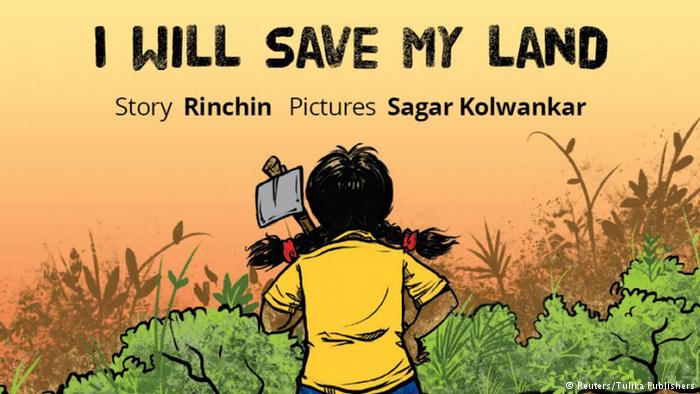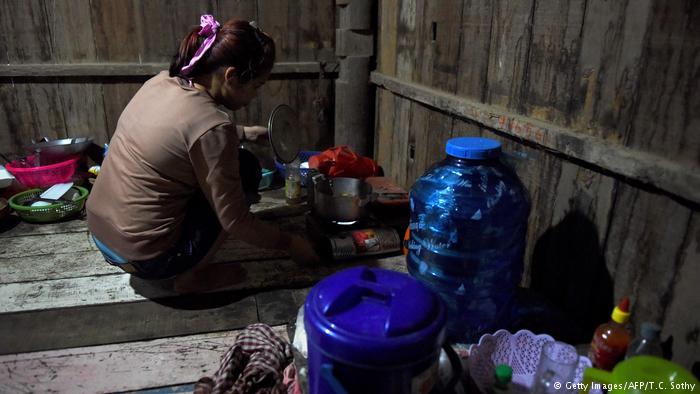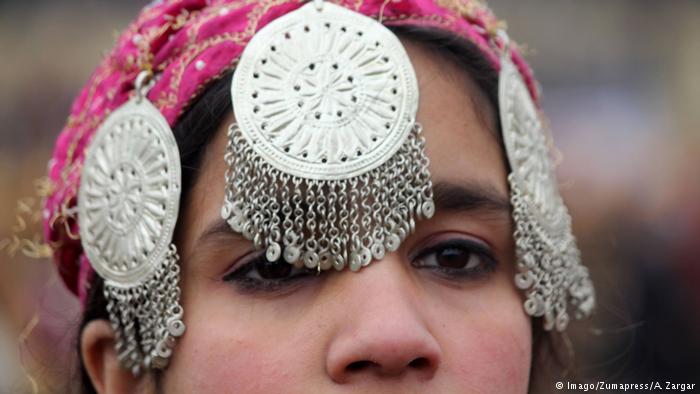Raw And Riveting, A Window Into The Lives of Abuse Victims
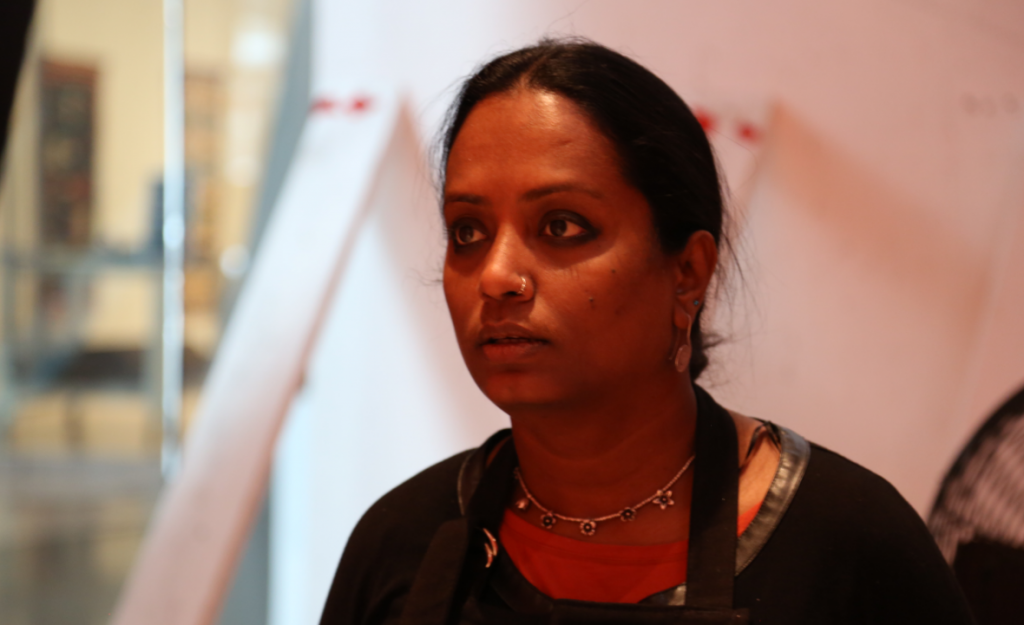
For her latest work, Delhi-based artist Mithu Sen, spent a month at a Kerala orphanage to experience firsthand what life was like for these marginalised young girls, who had already been through a lot of trials. © WFS
In her latest multimedia presentation, ‘I Have One Language; It’s Not Mine’, celebrated artist Mithu Sen describes the home as a temporary place. In this video installation she is Mago, a person who knows no language, at a home for girl orphans and abuse victims somewhere in Kerala.
She elaborates, “There are times when we feel homeless – literally, psychologically, emotionally, spiritually… We feel lost and abandoned, insecure and unloved. Home to me is a transit, a temporal factor, a halfway house on the way to where we’re going. It’s not where we belong. In this particular piece, I have used it as a metaphor to explain that actually we belong nowhere. Not just the orphans in this world [like the ones living in the home] but each one of us. Additionally, this video is based on my ongoing practice on radical hospitality exploring the idea of guest-host-hospitality experience.”
A Bengali poet, Sen, who has obtained her Bachelor’s and Master’s degrees in painting from Kala Bhavan at Santiniketan and later completed a postgraduate programme at the Glasgow School of Art in the United Kingdom, decided to settle down in Delhi to “follow her destiny”. But the move was tougher to negotiate than she had anticipated. “It was a new world. I was exposed to several hierarchical codes, and I struggled against all kinds of subtle barriers – social, sexual, political, regional, emotional, lingual, and so on. For someone like me, who has been on a lifelong quest for a language that is beyond social, historical and cultural hierarchies, it was very unusual. So I began looking for a new medium of communication that was not as rigid and as ‘elite’ as the society around me where I felt suppressed and humiliated on many levels,” she reveals.
What life was like for the marginalised young girls
‘I Have One Language; It’s Not Mine’ is a unique experiment that Sen has conducted in her search for a unique language. Through this she has tried to take a closer look at the limitations of language and the possibility of dialogue outside it. Instead of her usual evocative expressions on canvas, Sen took her art to a place where life gets real and complex. She went to a Kerala orphanage and lived there for nearly a month as her alter-ego, Mago, to experience firsthand what life was like for these marginalised young girls, who had already been through a lot of trials.
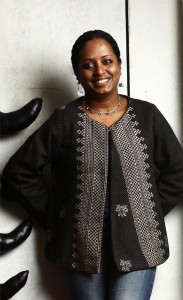
Through her multimedia presentation, ‘I Have One Language; It’s Not Mine’, artist Mithu Sen takes a closer look at the limitations of language and the possibility of dialogue outside it.
As the screen comes to life, the viewers are witness to Mago uttering gibberish as a group of puzzled, curious, youngsters look on. Then, all of a sudden, they start bombarding her with questions. ‘Are you Tamil? Are you from Africa? What is your name?’ they ask. The girls try to engage with her by talking in several languages but they are unable to understand who this new visitor to their home is. And then something amazing happens. Instead of shutting them up, this obvious lack of a common language between the girls and the newcomer frees them of all their inhibitions and they talk, laugh, sing… something that they otherwise do not do too often.
The unscripted performance, captured primarily on Sen’s iPhone, is at once fascinating and poignant. The little ones are not visible to the onlookers, their clothes, hair and faces all a blur. However, their voices are crystal clear. The camera is in their hands and so the video has a raw energy to it. A natural form of documentation follows and the closing shot is that of a doll sitting up against a pillow while the inmates sing her a lullaby.
“In Mago, I tried to create an abstract body that repressed emotional voices. In a potential moment of lingual anarchy, a language of the subconscious emerged. Mago became a morphed body that was more sonic than visual. I didn’t plan on letting Mago loose among the marginalised. But all of us are at the margins of society in one way or the other. The girls in the home are no different from you and me. We are all suppressed under the pillars of power and politics,” Sen points out astutely.
‘They should not lose hope’
The 42-minute video, which was on display at the Aspinwall House in Fort Kochi, as part of the Kochi-Muziris Biennale 2015, beautifully reflects the “anguish and hope, spontaneity and innocence, vulnerability and rebellion” of the children. But the days that Sen spent at the government home were quite tough on her. “I am a very emotional person and the experience drained me completely,” she confesses.
Disturbed sleep and stress followed her for some time and her doctor advised her to take it easy. “Initially, for this piece I had to document any ordinary family that speaks a language completely alien to me,” she says, adding, “But no such family was willing to take on a complete stranger for an even stranger project.” Much later, a friend got her in touch with this home in Kerala, and Sen’s project has turned out far better than she had hoped for.
The youngsters in the video truly have a special place in her heart. After all, she admits that at one level she also created this piece “to help the girls start believing in strangers… they should not lose hope, but with some intuitive acts they should learn the instinct of reacting promptly”. The artist intends to visit her young friends again on her next trip to Kerala. Not as Mago, but as Mithu Sen.
(This article is part of U.N. Women’s Empowering Women — Empowering Humanity: Picture It! campaign in the lead-up to Beijing+20.) © Women’s Feature Service
Author: Shwetha E. George
Editor: Marjory Linardy
WTO RECOMMENDS
Vaginas ‘more feared than plutonium’
A year after the fatal gang rape of a young medical student in New Delhi, Indians have started addressing sexual violence more openly; others should take a cue from the country, says Vagina Monologues author Eve Ensler. (From December 25, 2013)
The Indian singer app
At a time when much is being said about rape in India, a hilarious and thought provoking theater performance is giving audiences in Germany a real insight into the insecurity and sufferings of Indian women. “Shilpa – The Indian Singer App” is a theater performance with music, a solo performed by the Bangalore-based singer and actress M.D. Pallavi. (From October 2, 2013)
2013: the best movies
Since watching calories is the last thing you want when the holiday season sets in, it is the perfect time to turn that workhorse into a couch potato and watch all those movies you missed throughout the year. So get your popcorn ready as here is our verdict on few of the best women-centric motion pictures which you may have already watched but wouldn’t resist watching again. (From December 30, 2013)




